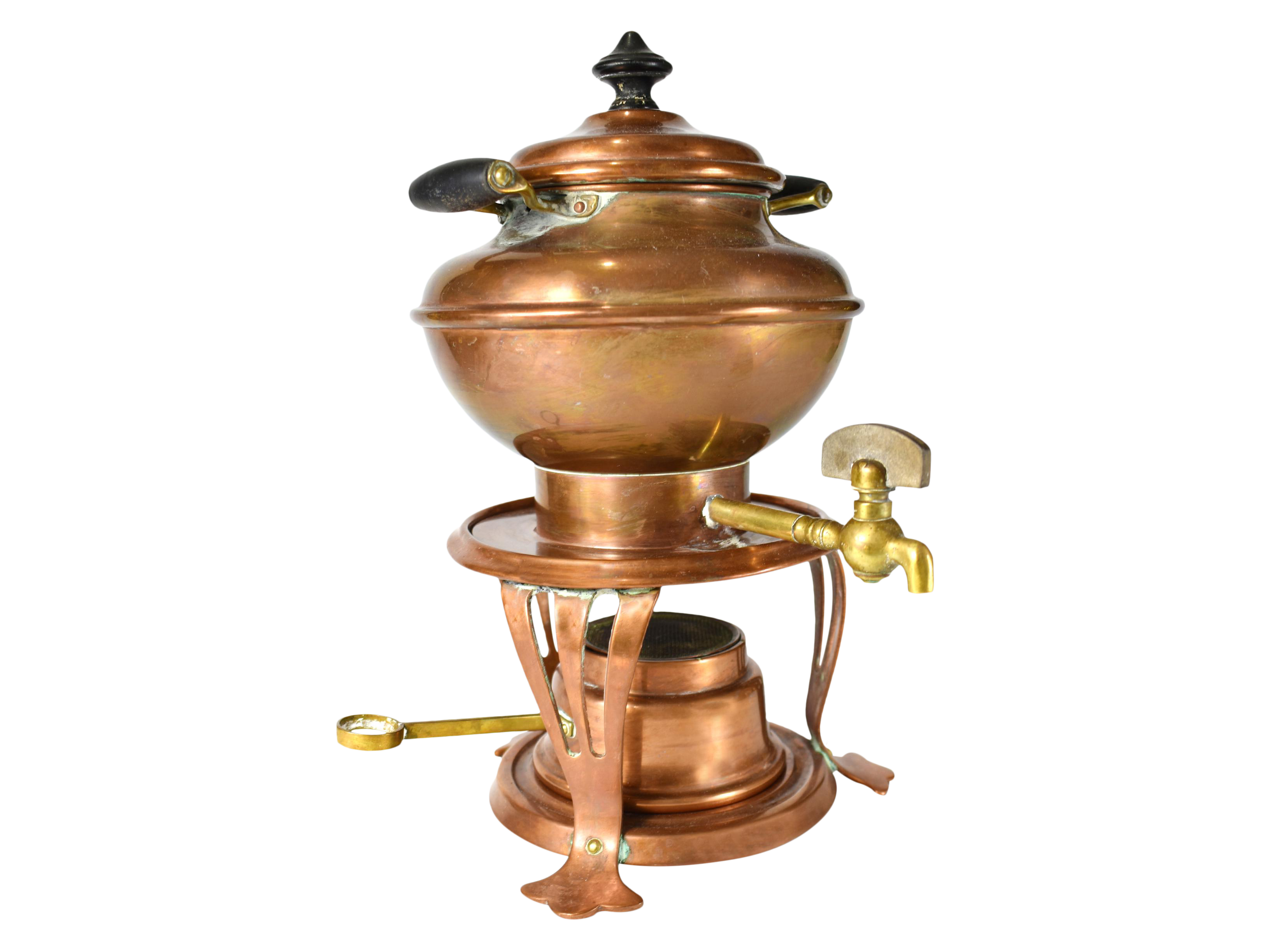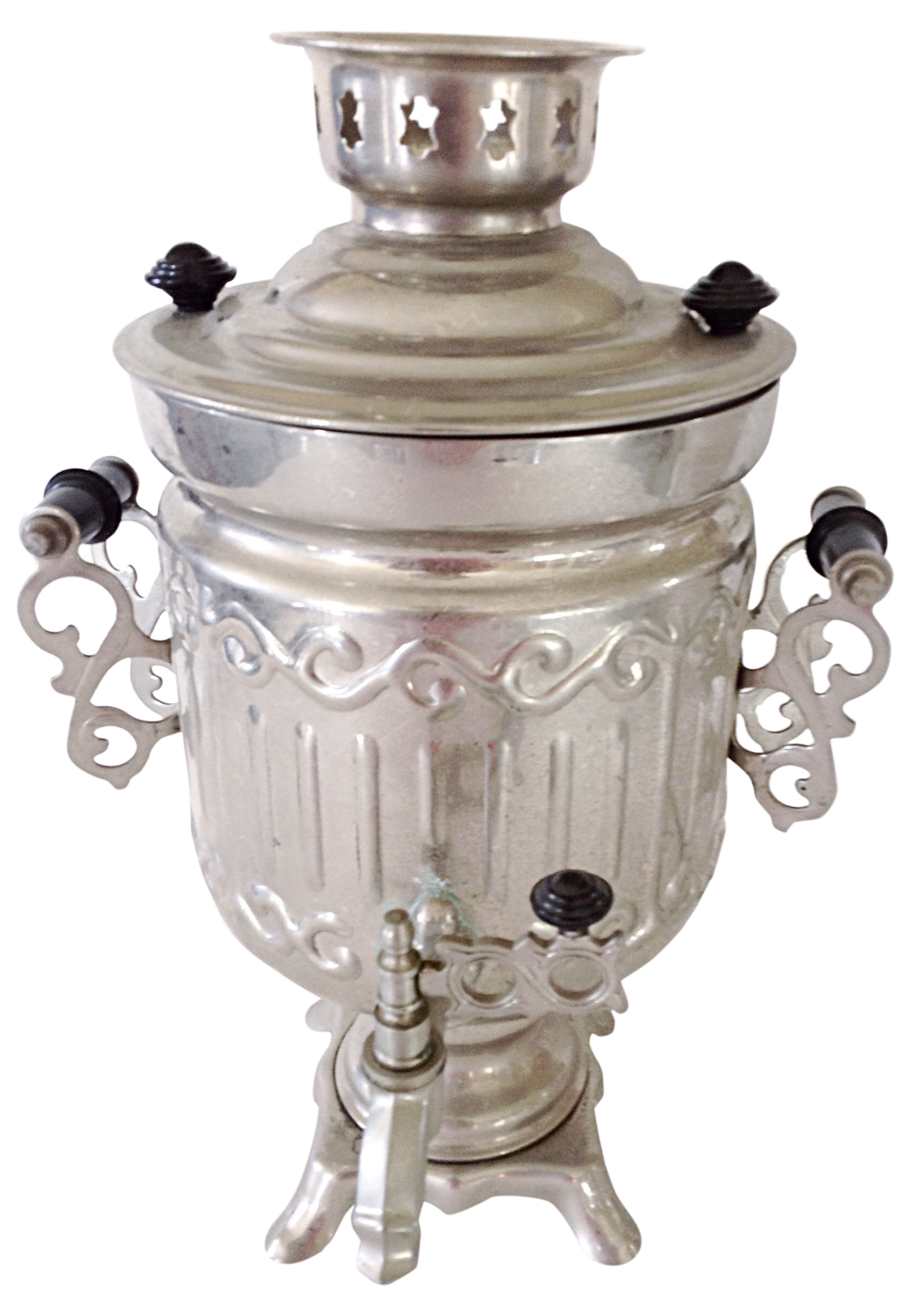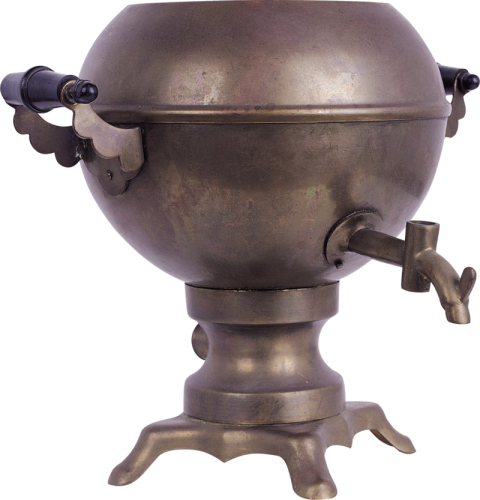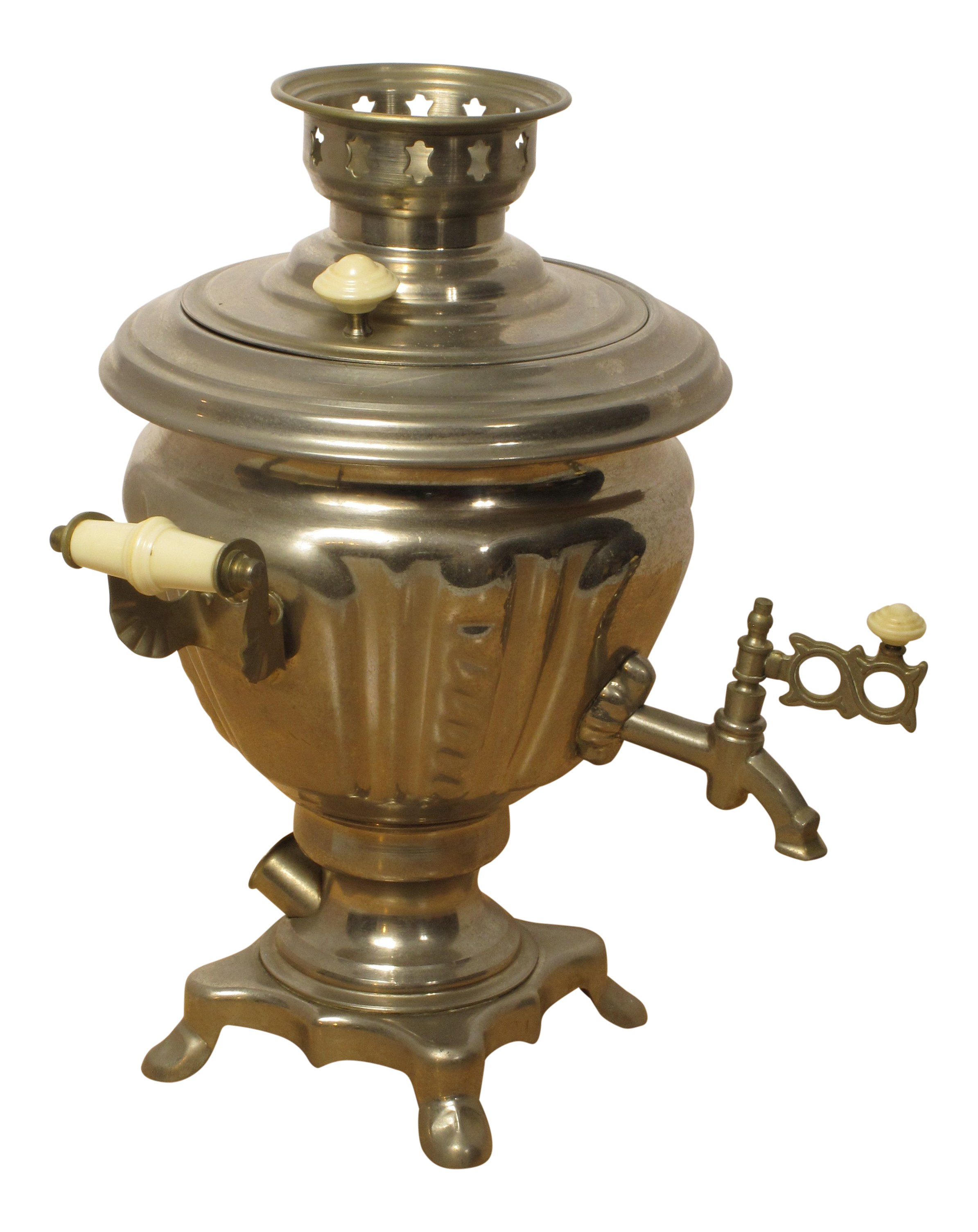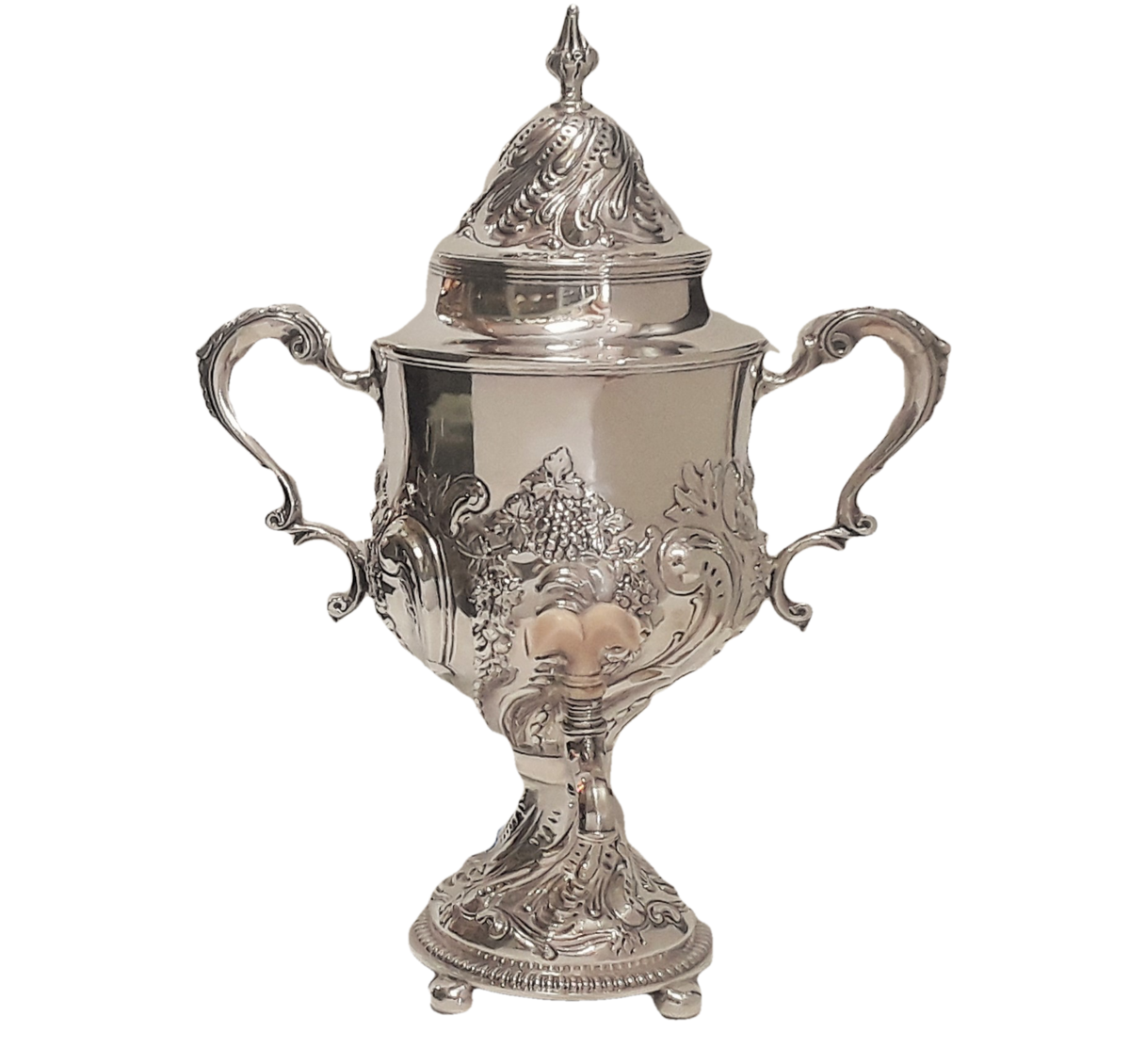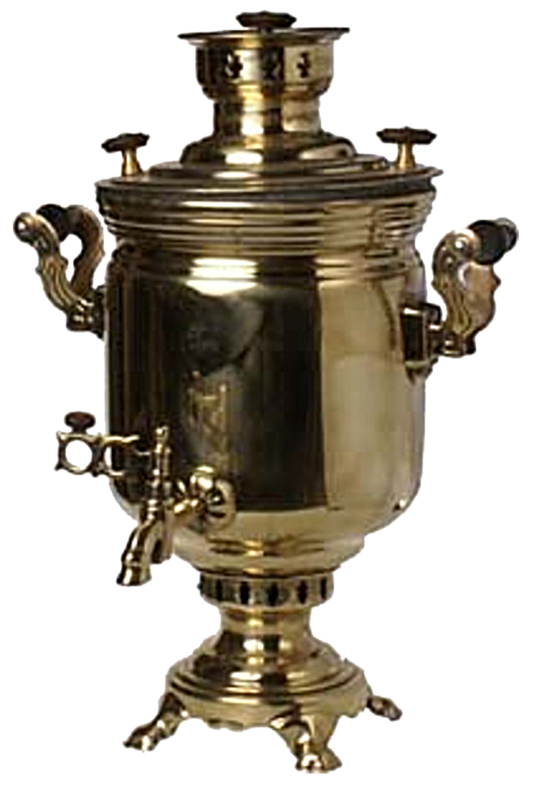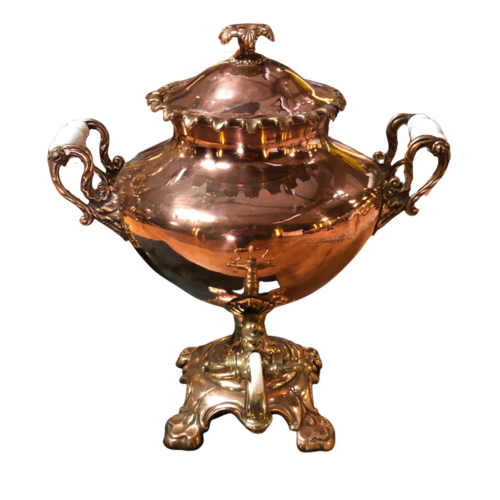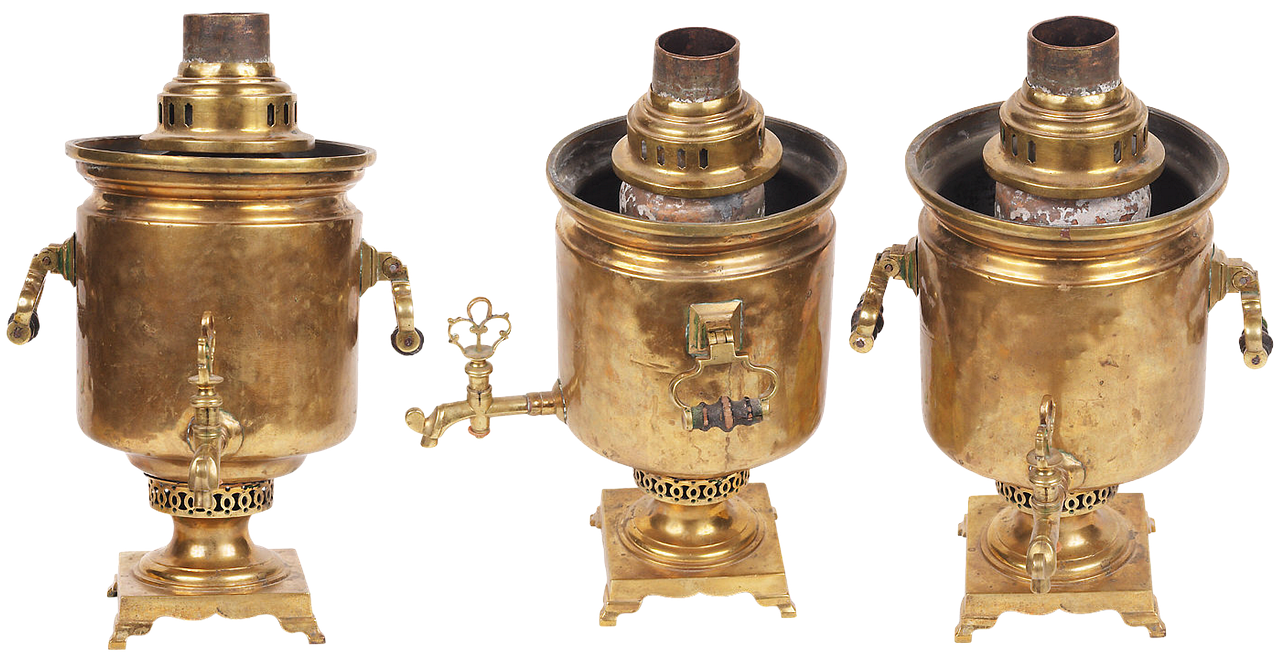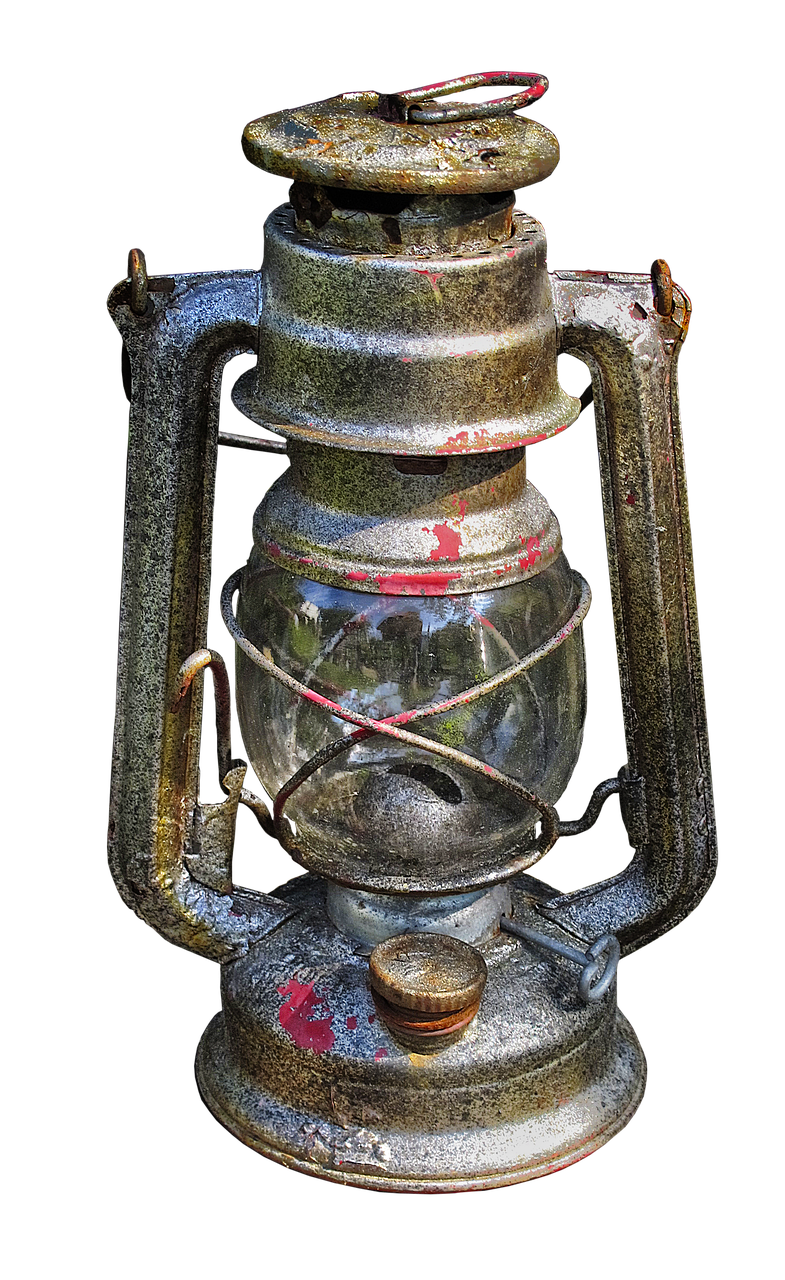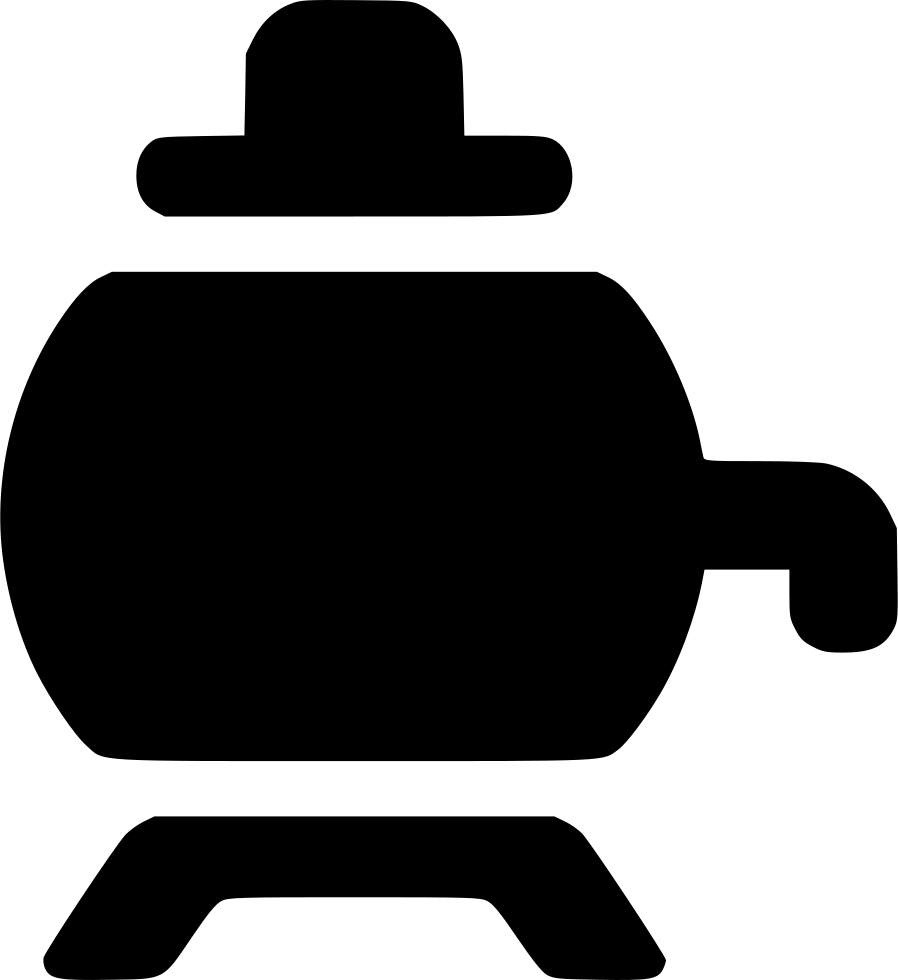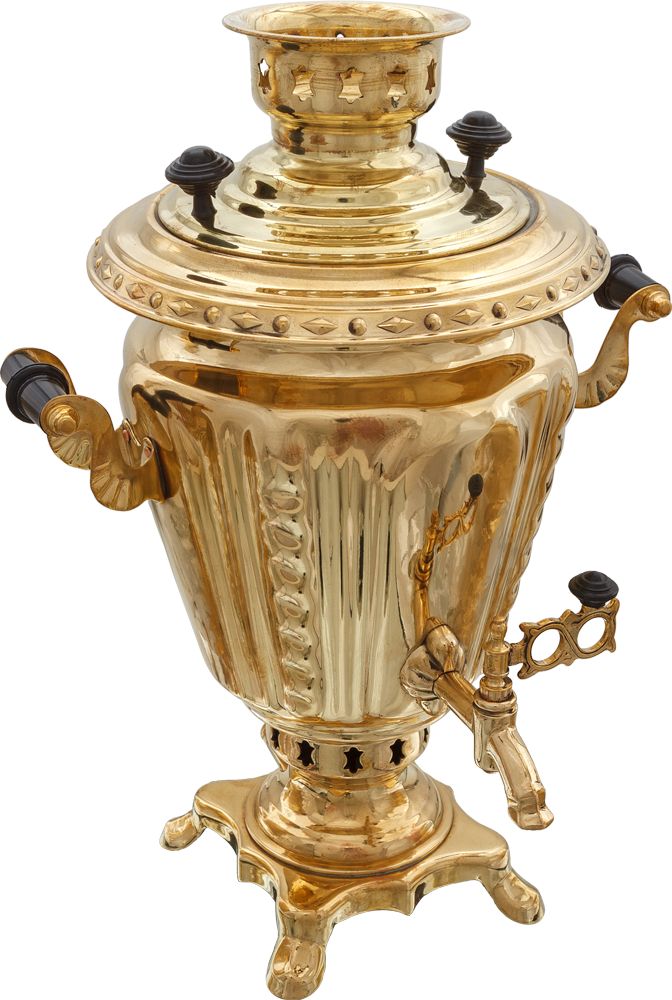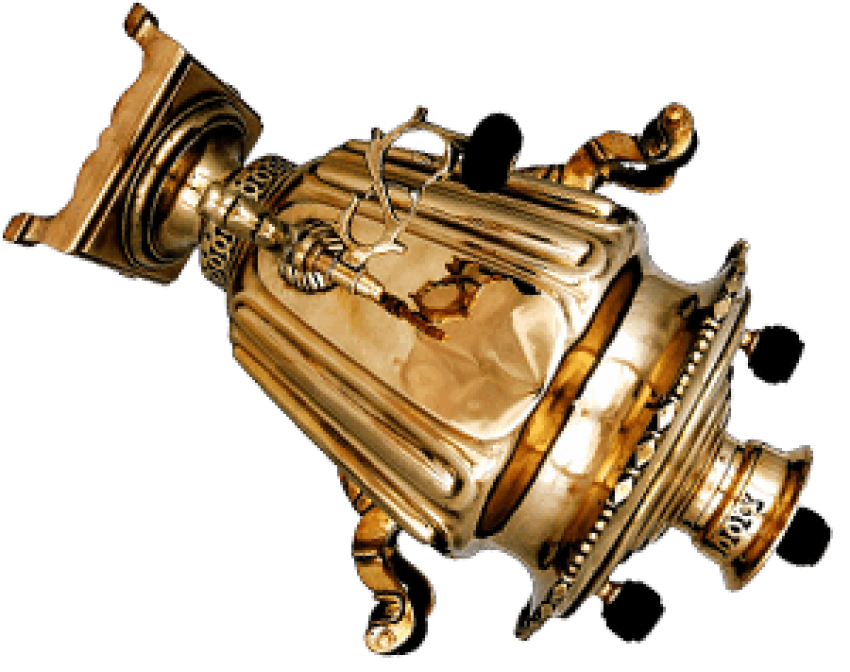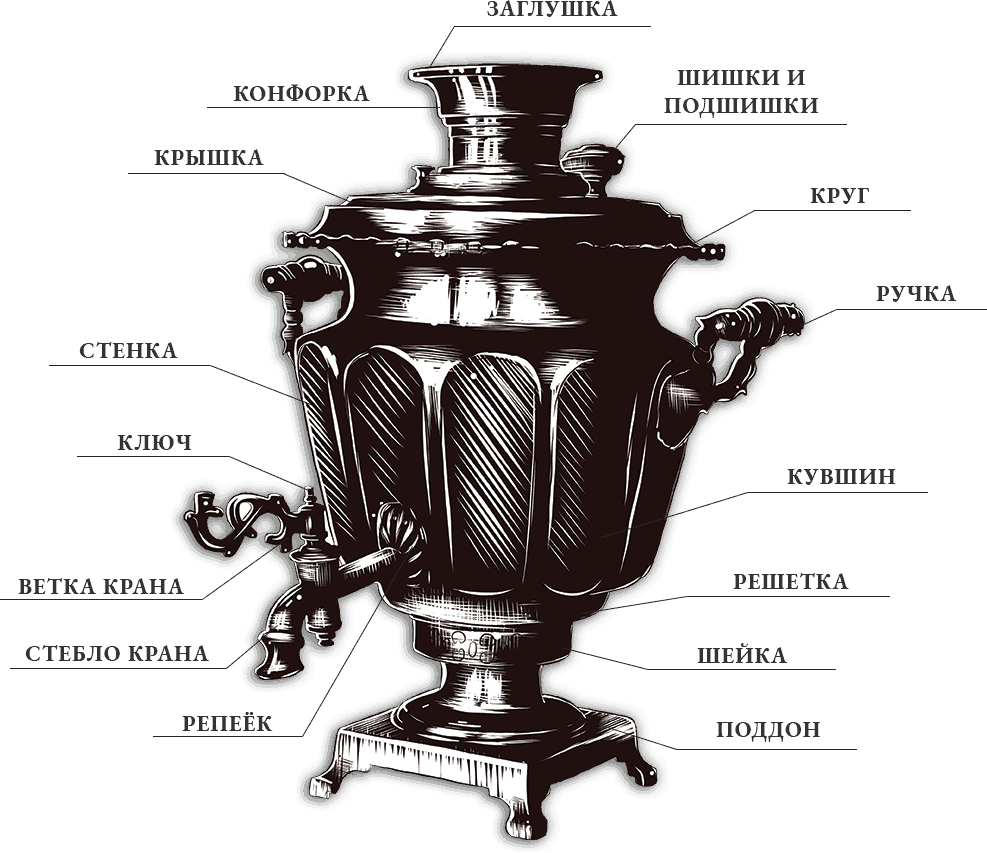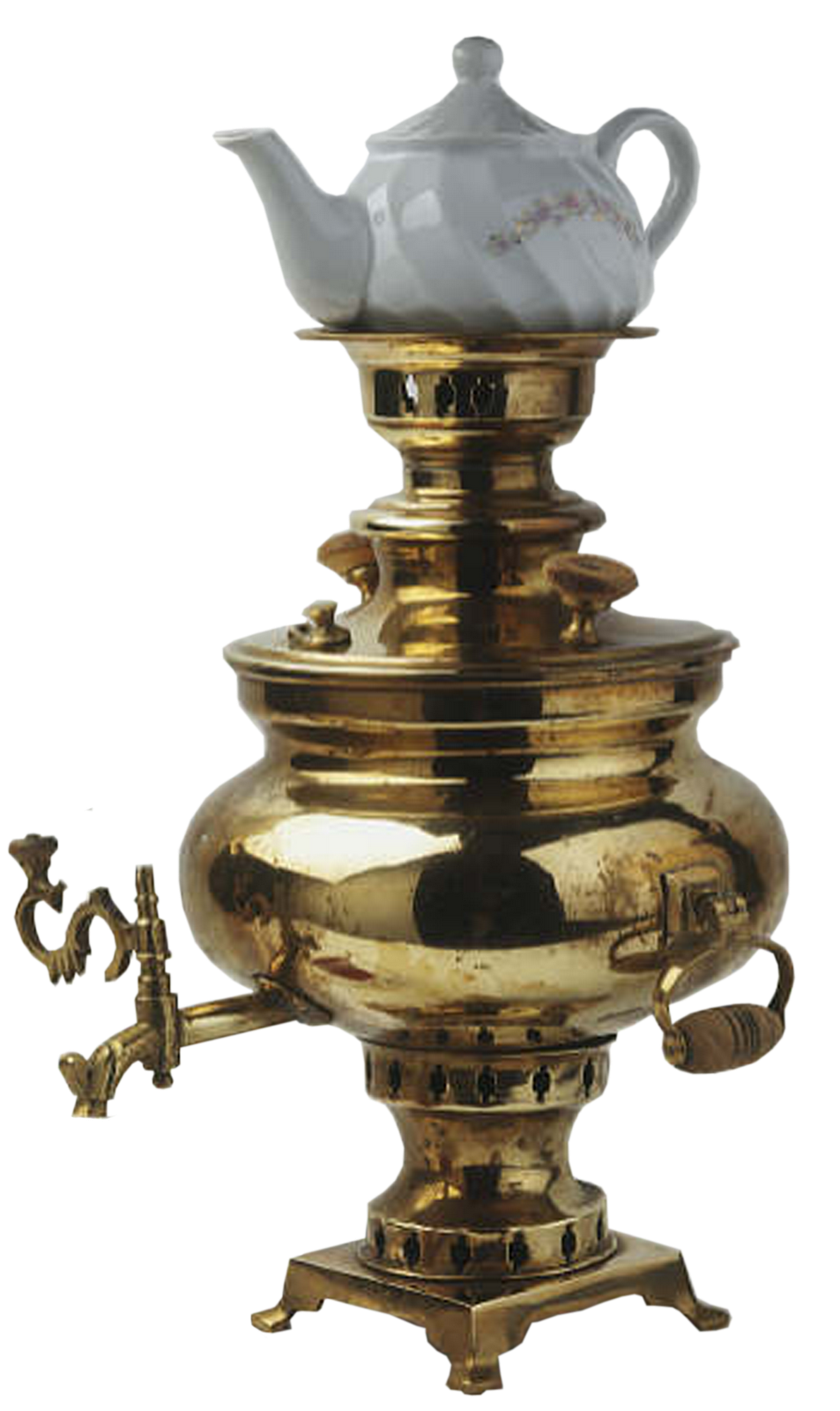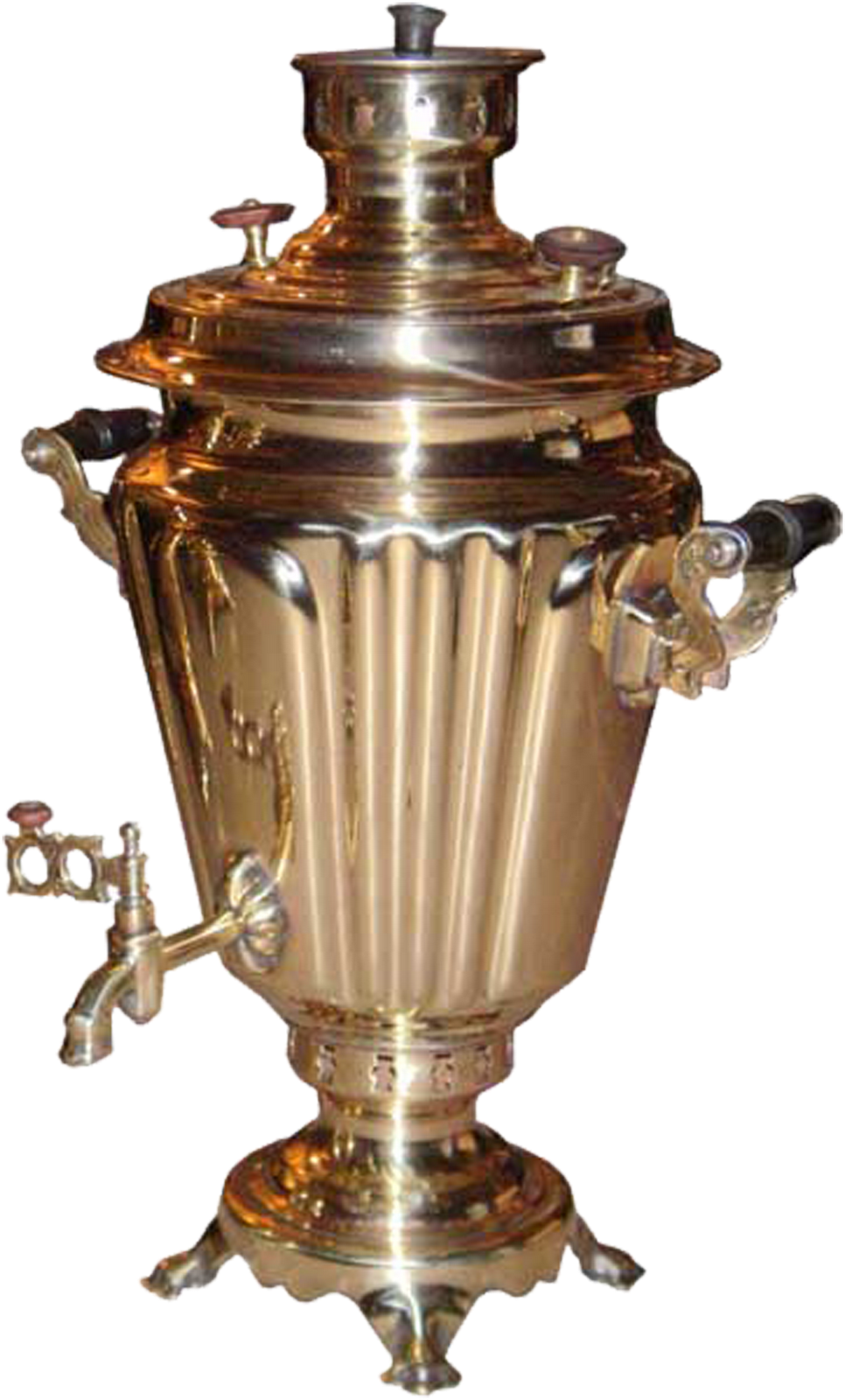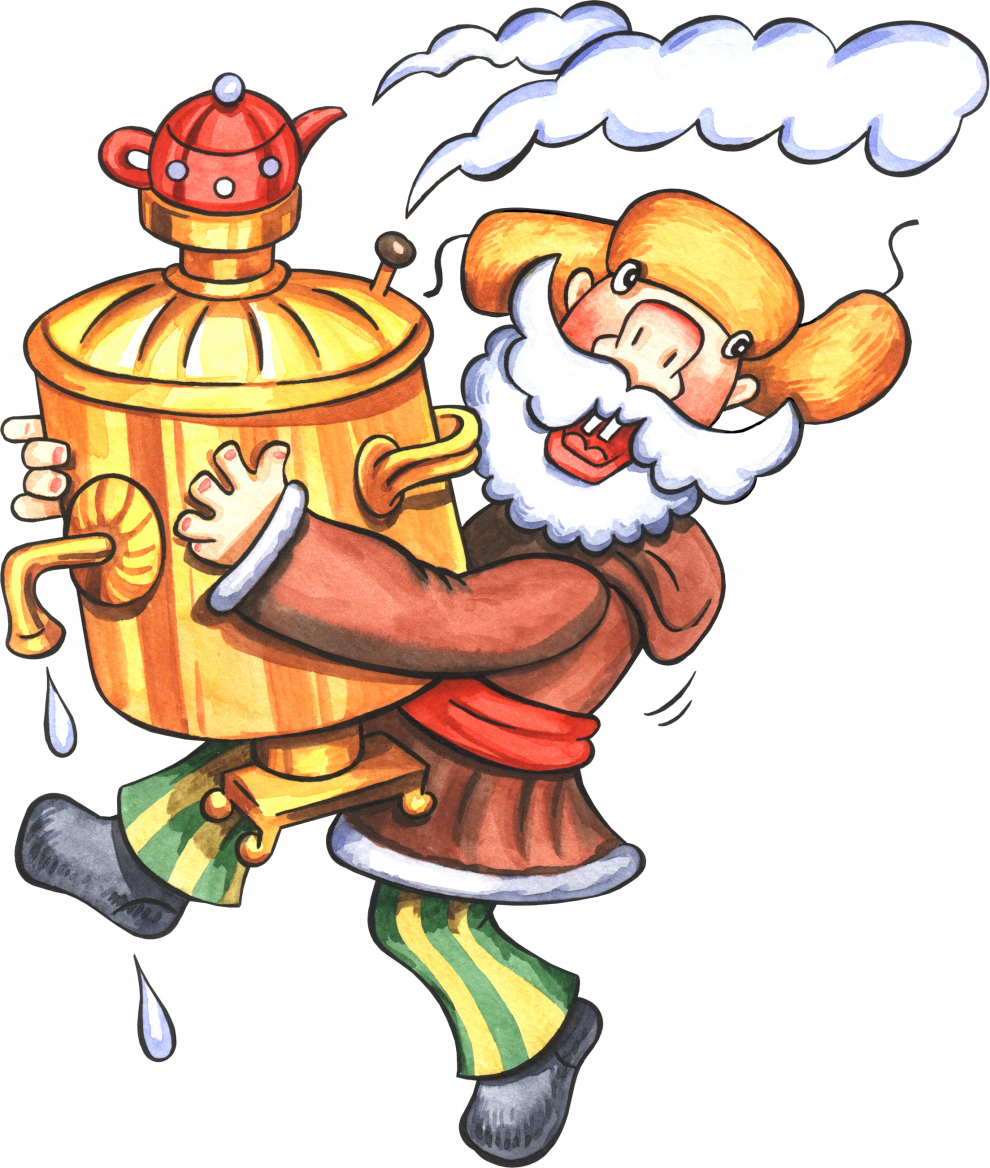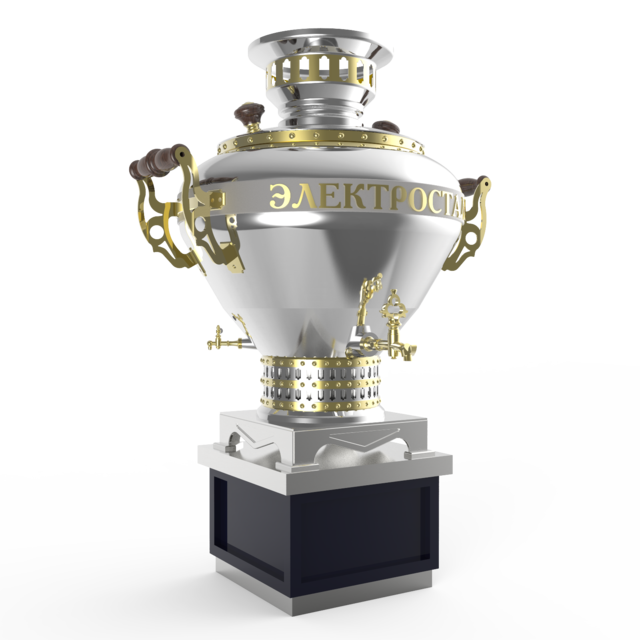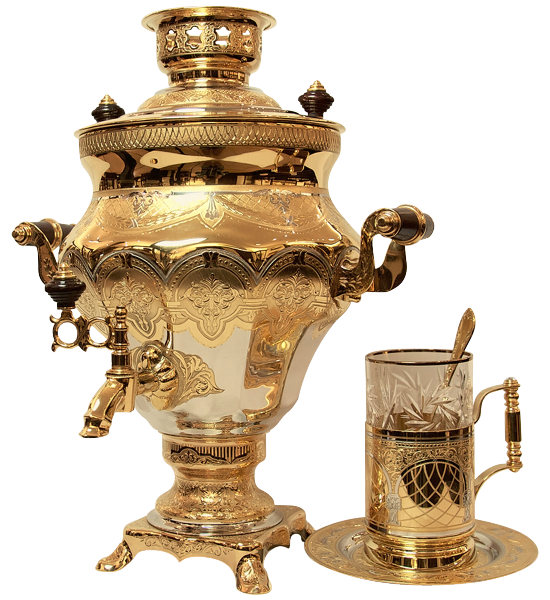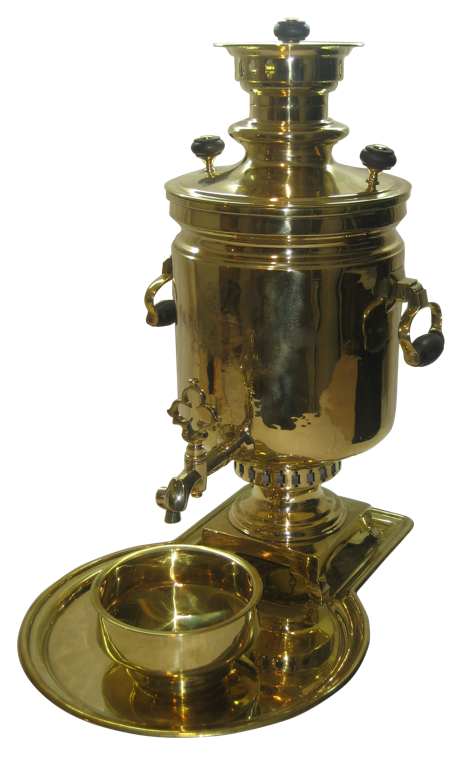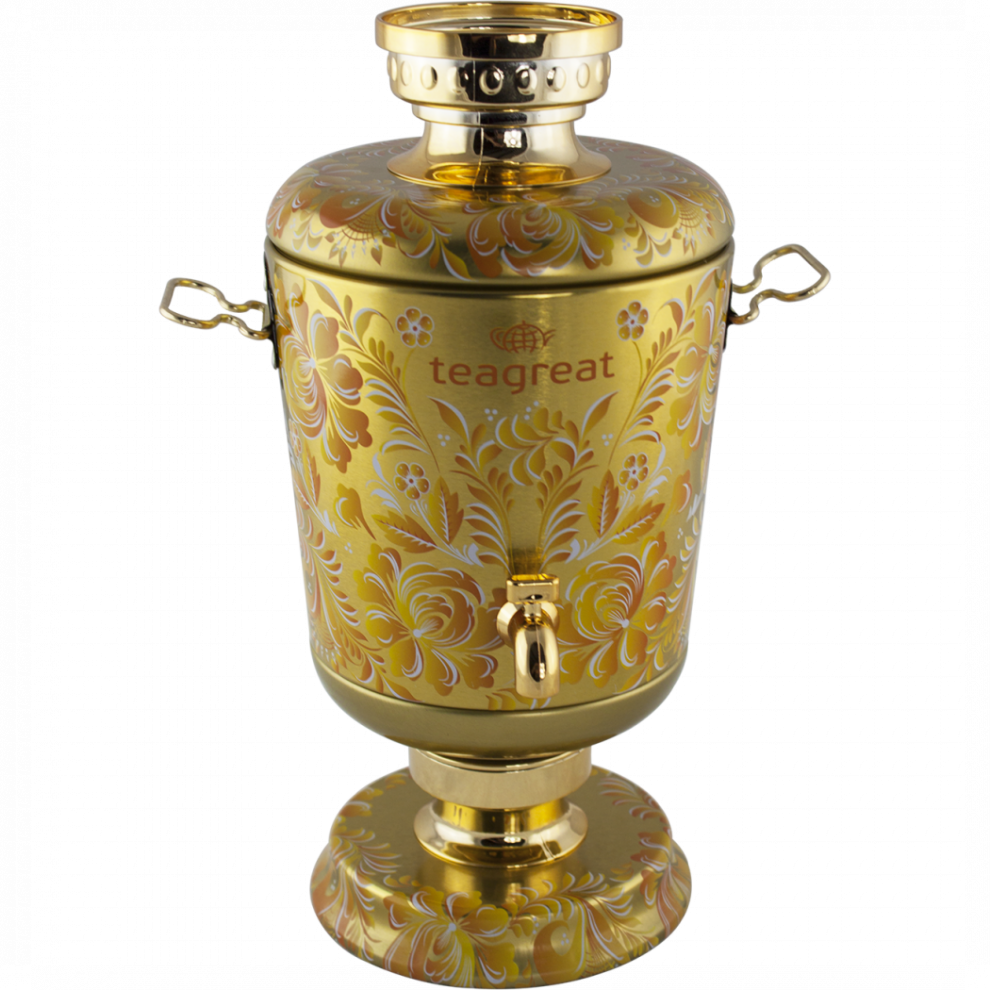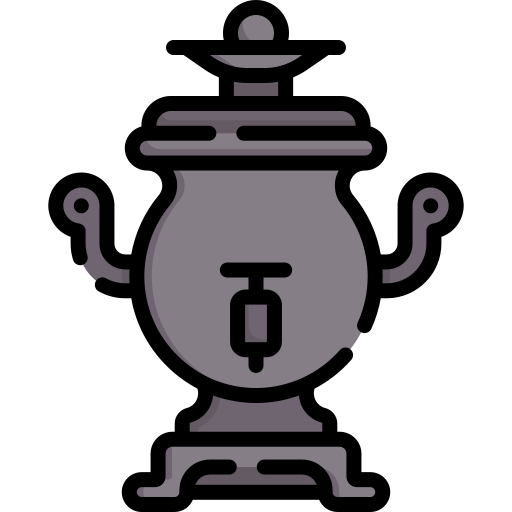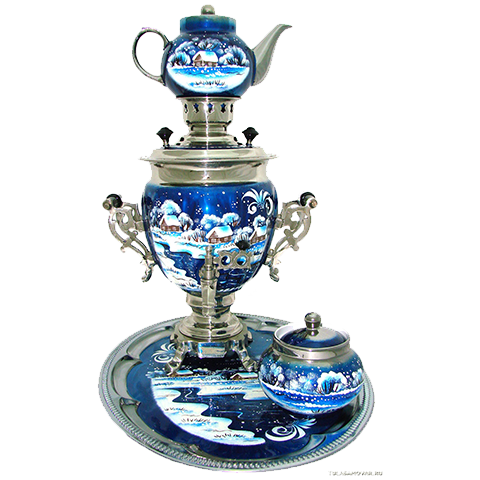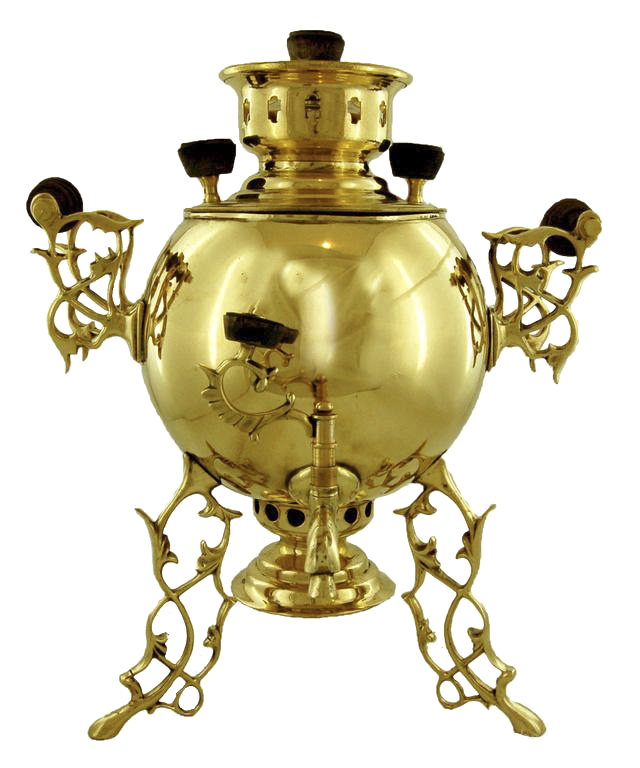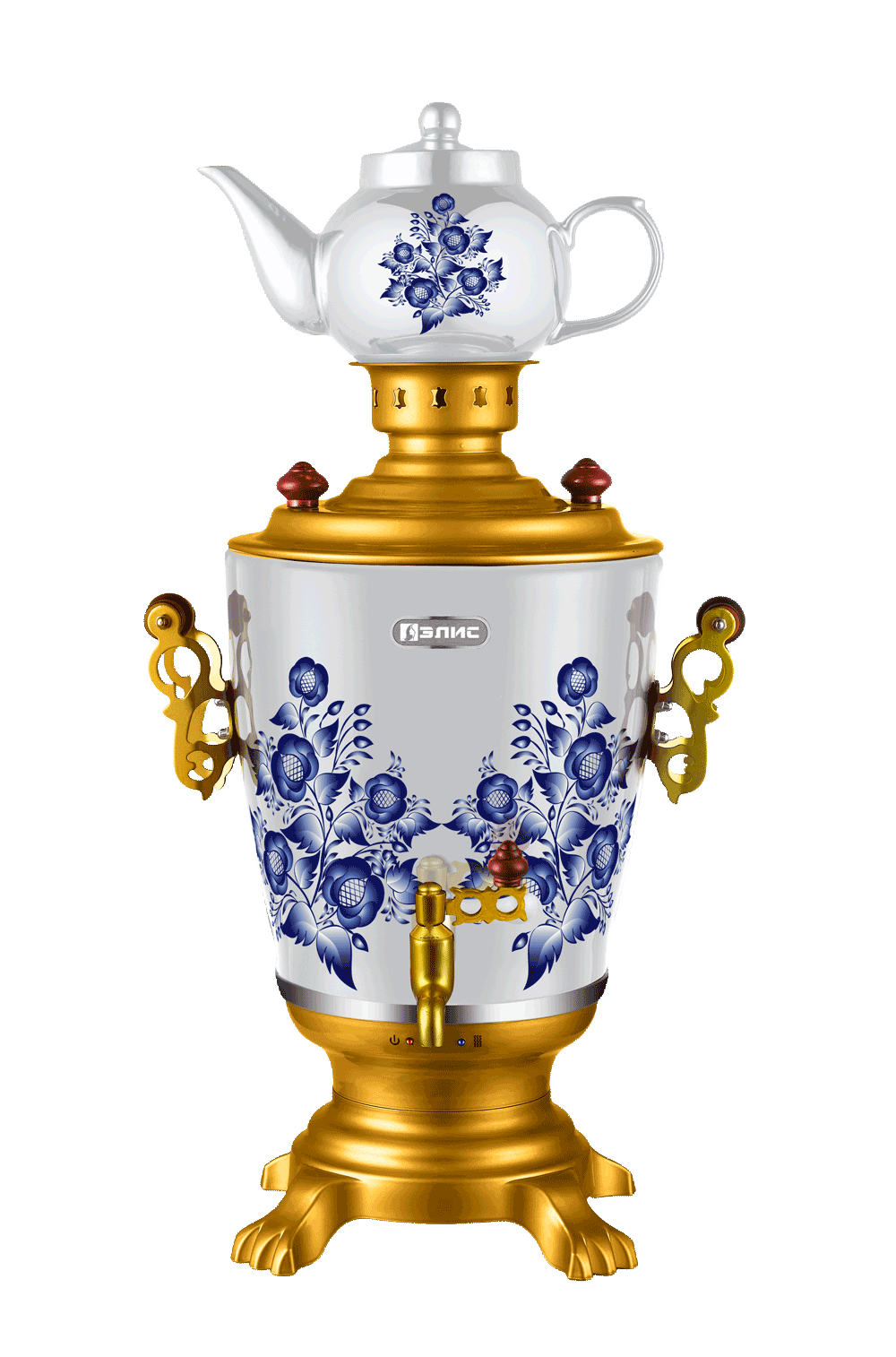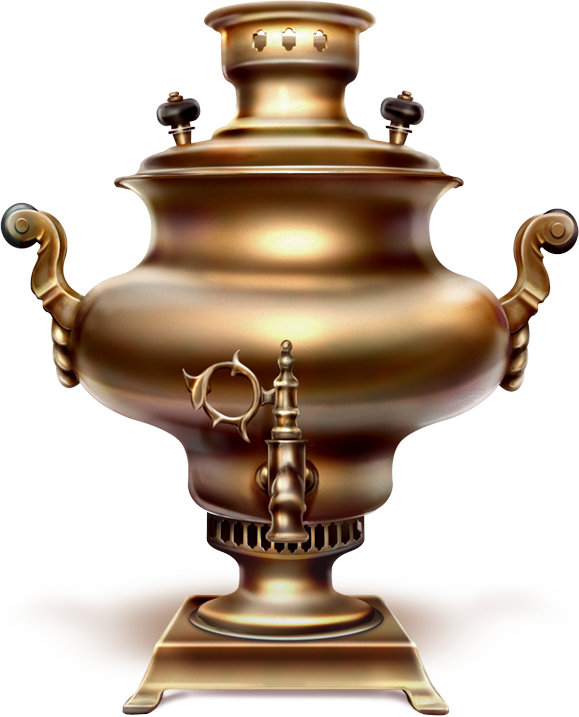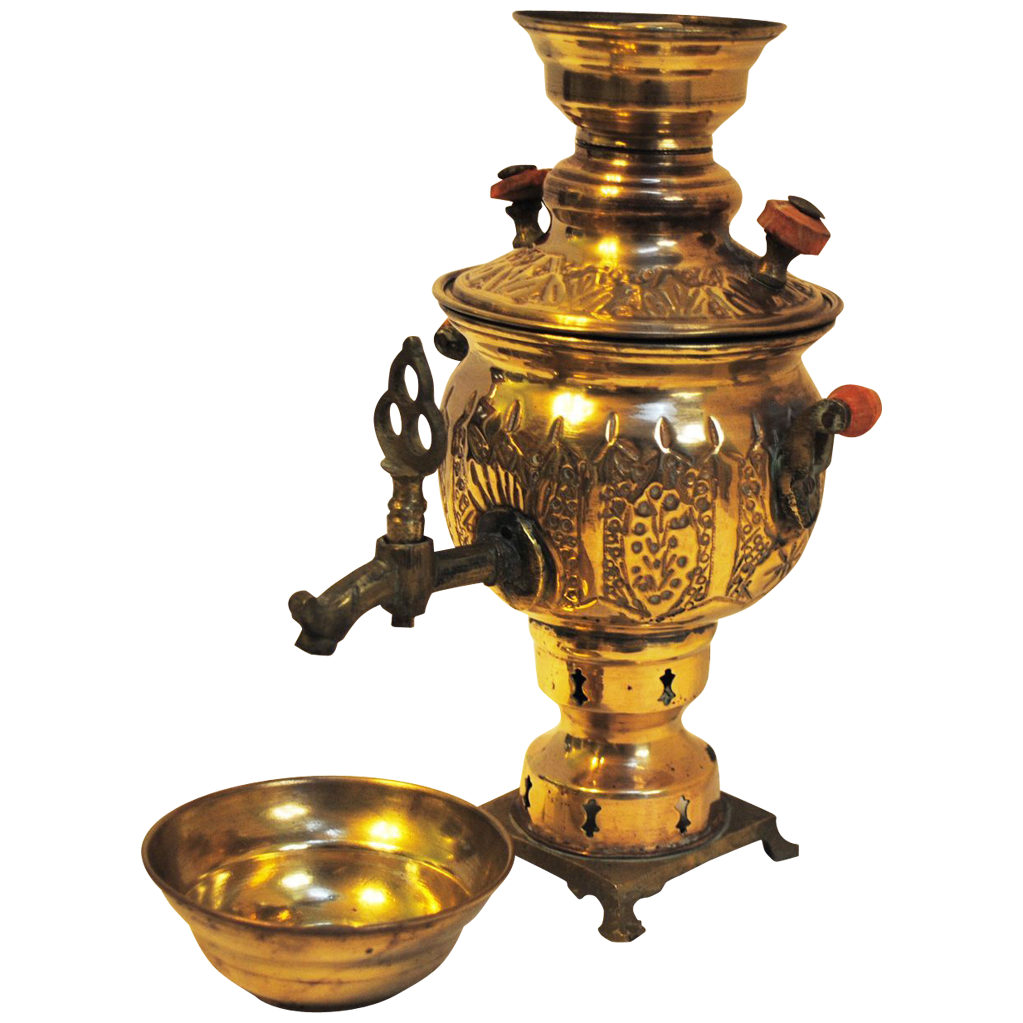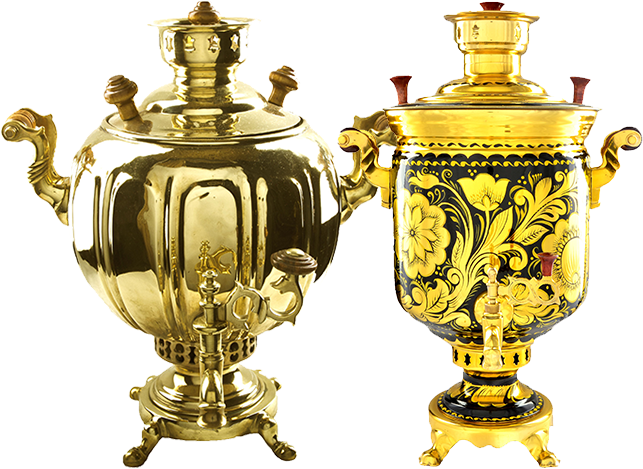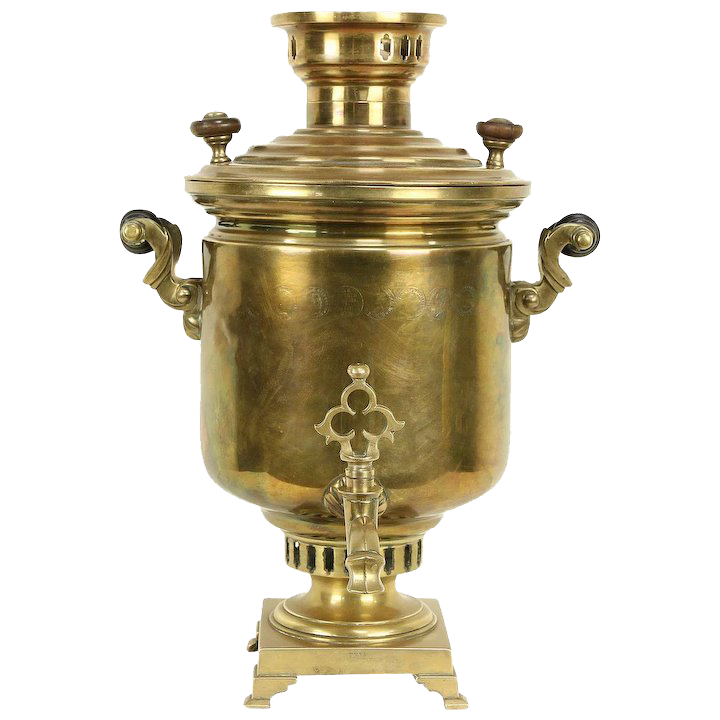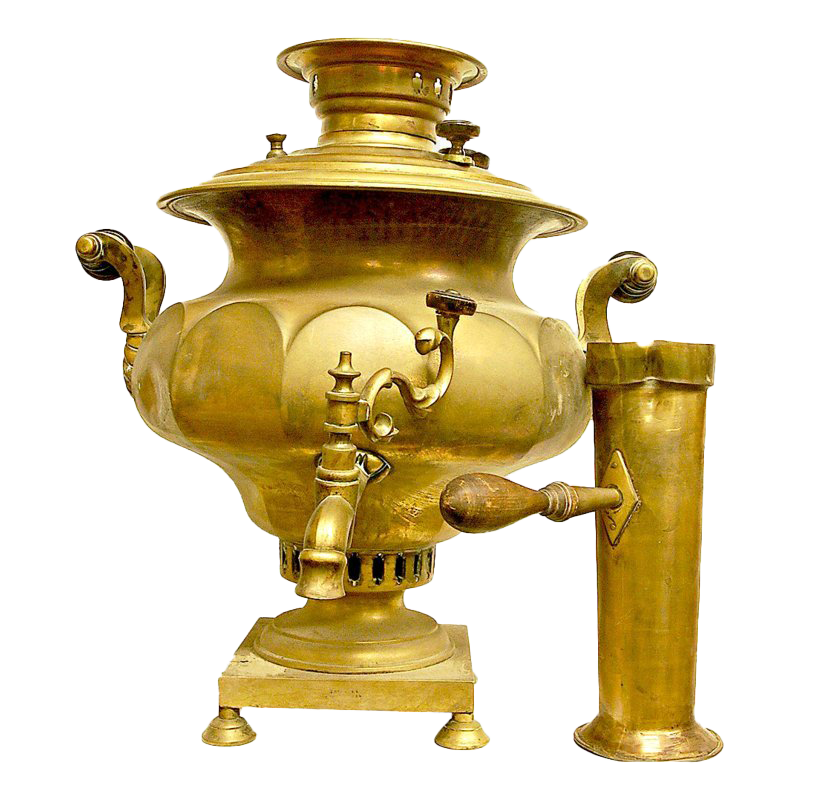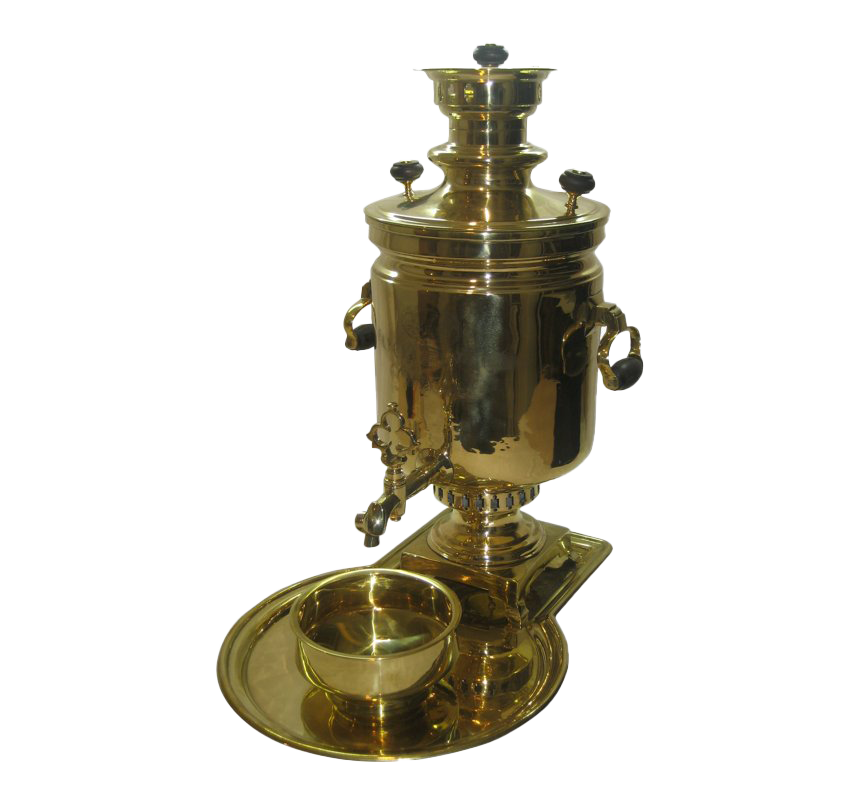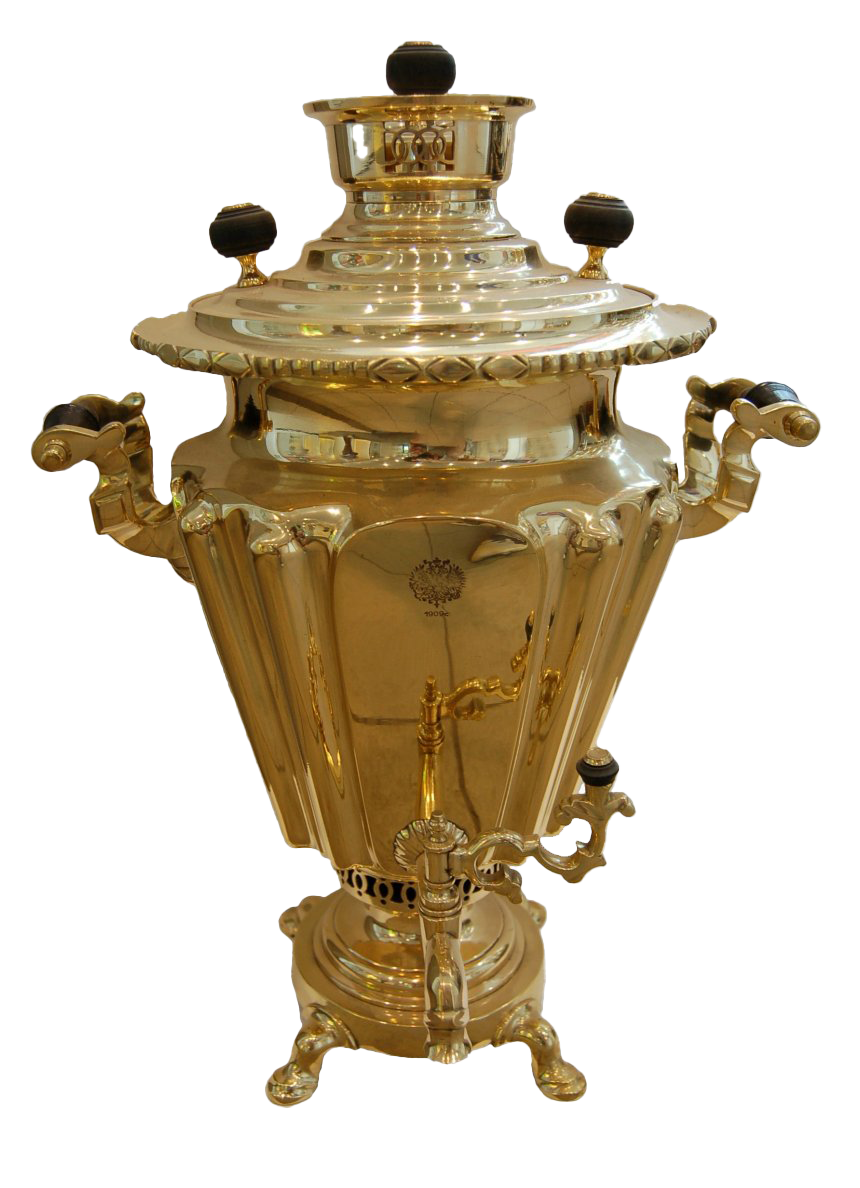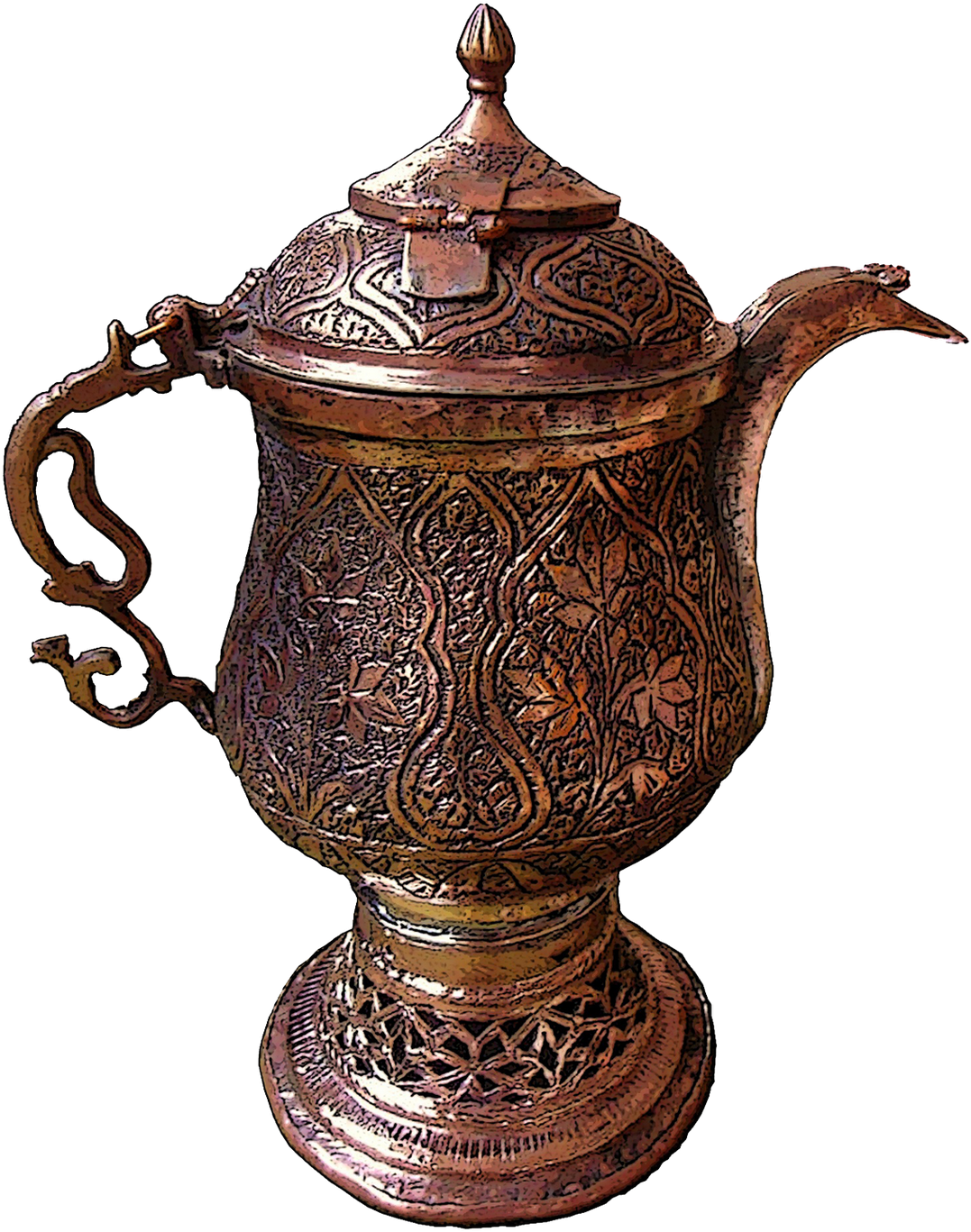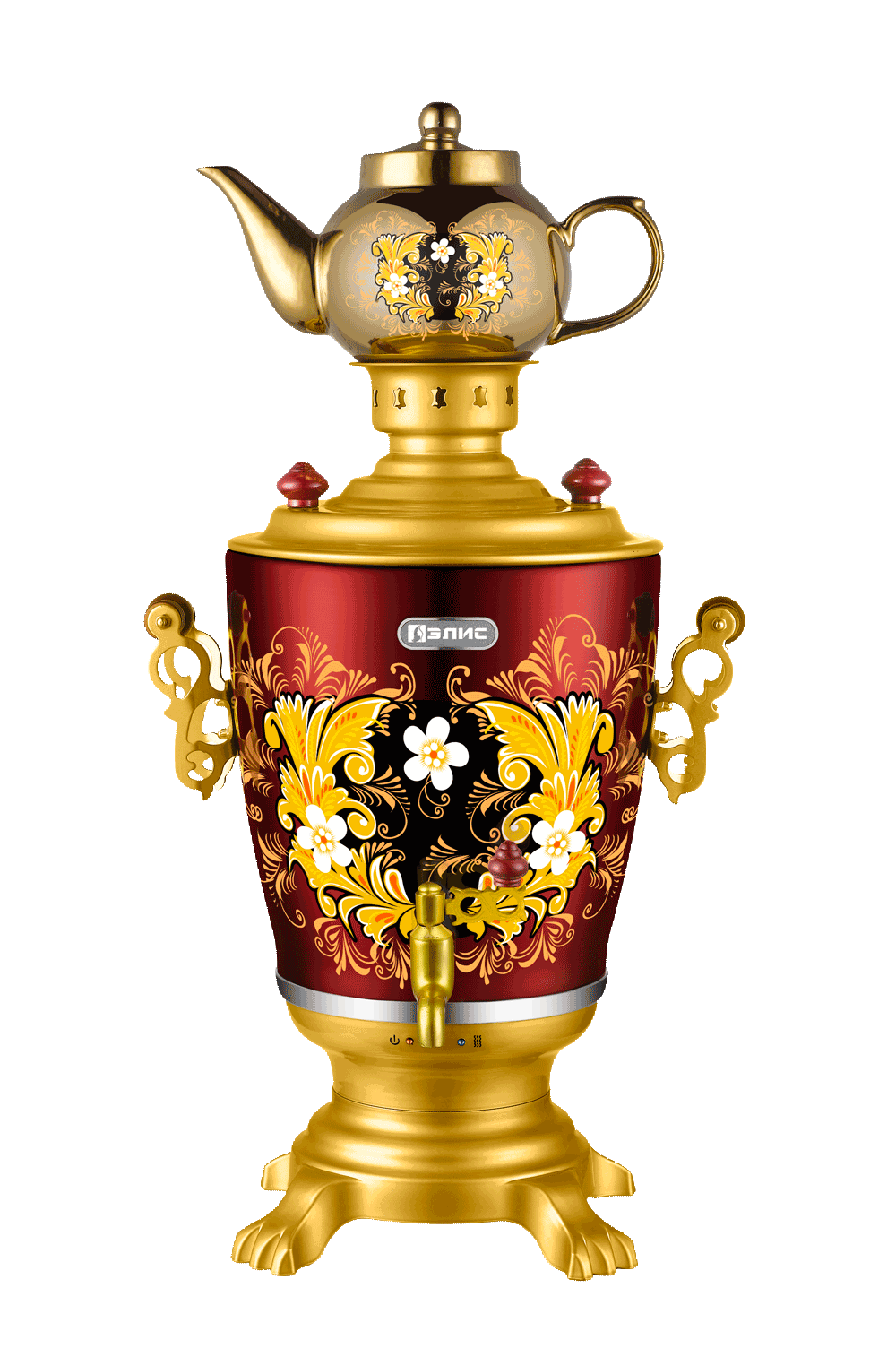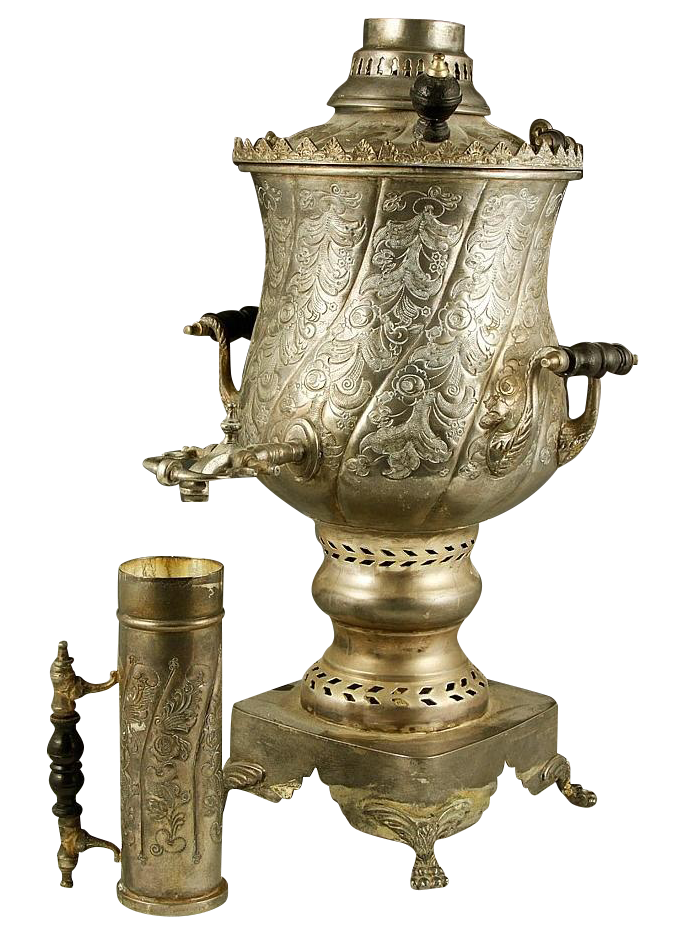Download top and best high-quality free Samovar PNG Transparent Images backgrounds available in various sizes. To view the full PNG size resolution click on any of the below image thumbnail.
License Info: Creative Commons 4.0 BY-NC
A samovar is a classic metal container for heating and boiling water. Despite its Russian origins, the samovar is well-known outside of Russia, having expanded through Russian culture to Eastern and South-Eastern Europe, Iran, Afghanistan, Kashmir, the Middle East, Azerbaijan, and portions of Central Europe. Many samovars feature a ring-shaped attachment (Russian: коноркa, konforka) around the chimney to hold and heat a teapot filled with tea concentrate, because the heated water is commonly used to prepare tea. While many older samovars used coal or kindling to heat water, many current samovars utilize electricity to heat water in a similar way as an electric water boiler. Antique samovars are appreciated for their exquisite craftsmanship.
Plain iron, copper, polished brass, bronze, silver, gold, tin, or nickel are the most common materials used to make samovars. A standard samovar has a body, a base and chimney, a cover and a steam vent, handles, a tap and key, a crown and ring, a chimney extension and cap, a dripbowl, and a teapot. An urn, krater, barrel, cylinder, or sphere might be used as the body form. Sizes and shapes range from big “40-pail” containers that carry 4 litres (1.1 US gal) to small 1 litre (0.26 US gal) containers.
A classic samovar is a huge metal container with a tap near the bottom and a vertical metal pipe running through it. The pipe is filled with solid fuel, which is fired to heat the surrounding container’s water. To assure draft, a tiny (6 to 8 inch/15 to 20 centimeter) smokestack is placed on top. The smokestack can be removed once the water has boiled and the fire has been extinguished, and a teapot put on top to be heated by the rising hot air. The teapot is used to brew zavarka (аварка), a strong tea concentrate. The tea is made by diluting the concentrate with heated water from the main container, generally at a 10-to-1 water-to-tea ratio, but preferences vary.
Plain iron, copper, polished brass, bronze, silver, gold, tin, or nickel are the most common materials used to make samovars. A standard samovar has a body, a base and chimney, a cover and a steam vent, handles, a tap and key, a crown and ring, a chimney extension and cap, a dripbowl, and a teapot. An urn, krater, barrel, cylinder, or sphere might be used as the body form. Sizes and shapes range from big “40-pail” containers that carry 4 litres (1.1 US gal) to small 1 litre (0.26 US gal) containers.
A classic samovar is a huge metal container with a tap near the bottom and a vertical metal pipe running through it. The pipe is filled with solid fuel, which is fired to heat the surrounding container’s water. To assure draft, a tiny (6 to 8 inch/15 to 20 centimeter) smokestack is placed on top. The smokestack can be removed once the water has boiled and the fire has been extinguished, and a teapot put on top to be heated by the rising hot air. The teapot is used to brew zavarka (аварка), a strong tea concentrate. The tea is made by diluting the concentrate with heated water from the main container, generally at a 10-to-1 water-to-tea ratio, but preferences vary.
Download Samovar PNG images transparent gallery
- Samovar Antique No Background
Resolution: 3264 × 2448
Size: 2337 KB
Image Format: .png
Download
- Samovar Antique PNG
Resolution: 1684 × 2435
Size: 2709 KB
Image Format: .png
Download
- Samovar Antique PNG Pic
Resolution: 480 × 500
Size: 265 KB
Image Format: .png
Download
- Samovar Antique PNG File
Resolution: 2389 × 3009
Size: 4183 KB
Image Format: .png
Download
- Samovar Antique PNG Image
Resolution: 1200 × 1130
Size: 917 KB
Image Format: .png
Download
- Samovar Antique PNG Cutout
Resolution: 535 × 800
Size: 397 KB
Image Format: .png
Download
- Samovar Antique PNG Images
Resolution: 500 × 500
Size: 246 KB
Image Format: .png
Download
- Samovar
Resolution: 512 × 512
Size: 15 KB
Image Format: .png
Download
- Samovar PNG
Resolution: 512 × 512
Size: 9 KB
Image Format: .png
Download
- Samovar Modern
Resolution: 1280 × 659
Size: 1035 KB
Image Format: .png
Download
- Samovar PNG Pic
Resolution: 785 × 1280
Size: 1497 KB
Image Format: .png
Download
- Samovar PNG File
Resolution: 898 × 980
Size: 17 KB
Image Format: .png
Download
- Samovar PNG Image
Resolution: 672 × 1000
Size: 809 KB
Image Format: .png
Download
- Samovar PNG Photo
Resolution: 850 × 672
Size: 341 KB
Image Format: .png
Download
- Samovar PNG Cutout
Resolution: 987 × 853
Size: 87 KB
Image Format: .png
Download
- Samovar Modern PNG
Resolution: 953 × 1600
Size: 973 KB
Image Format: .png
Download
- Samovar Modern PNG Pic
Resolution: 966 × 1600
Size: 1177 KB
Image Format: .png
Download
- Samovar PNG Images
Resolution: 990 × 1168
Size: 1402 KB
Image Format: .png
Download
- Samovar Modern PNG File
Resolution: 640 × 640
Size: 226 KB
Image Format: .png
Download
- Samovar Modern PNG Image
Resolution: 550 × 600
Size: 463 KB
Image Format: .png
Download
- Samovar Modern PNG Photo
Resolution: 462 × 766
Size: 381 KB
Image Format: .png
Download
- Samovar PNG Photos
Resolution: 990 × 990
Size: 774 KB
Image Format: .png
Download
- Samovar Transparent
Resolution: 512 × 512
Size: 28 KB
Image Format: .png
Download
- Samovar PNG Clipart
Resolution: 848 × 980
Size: 18 KB
Image Format: .png
Download
- Samovar PNG Picture
Resolution: 480 × 480
Size: 209 KB
Image Format: .png
Download
- Samovar PNG HD Image
Resolution: 640 × 768
Size: 428 KB
Image Format: .png
Download
- Samovar PNG Image HD
Resolution: 1000 × 1514
Size: 162 KB
Image Format: .png
Download
- Samovar No Background
Resolution: 468 × 340
Size: 51 KB
Image Format: .png
Download
- Samovar PNG Images HD
Resolution: 579 × 717
Size: 431 KB
Image Format: .png
Download
- Samovar Modern PNG Cutout
Resolution: 1023 × 1023
Size: 719 KB
Image Format: .png
Download
- Samovar Antique
Resolution: 643 × 469
Size: 465 KB
Image Format: .png
Download
- Samovar Antique PNG Photo
Resolution: 720 × 720
Size: 340 KB
Image Format: .png
Download
- Samovar Antique PNG Photos
Resolution: 820 × 800
Size: 598 KB
Image Format: .png
Download
- Samovar Antique Transparent
Resolution: 860 × 802
Size: 325 KB
Image Format: .png
Download
- Samovar Antique PNG Clipart
Resolution: 860 × 1188
Size: 709 KB
Image Format: .png
Download
- Samovar Antique PNG Picture
Resolution: 1077 × 1367
Size: 2011 KB
Image Format: .png
Download
- Samovar Antique PNG HD Image
Resolution: 1000 × 1514
Size: 178 KB
Image Format: .png
Download
- Samovar Antique PNG Image HD
Resolution: 686 × 934
Size: 935 KB
Image Format: .png
Download
